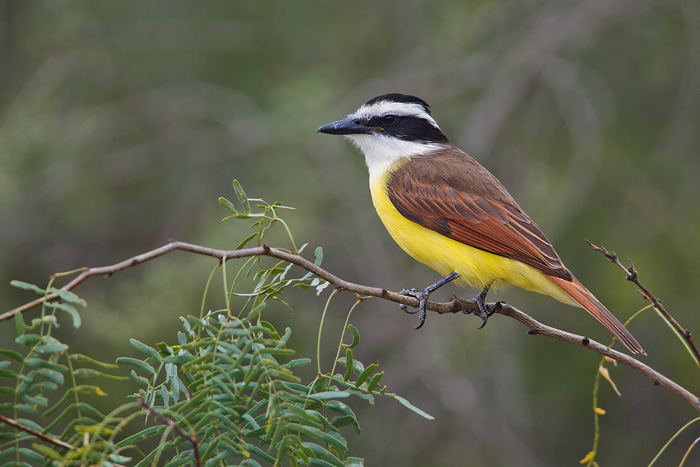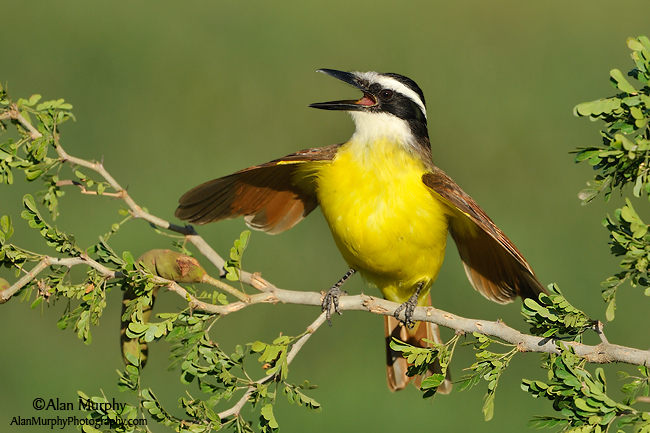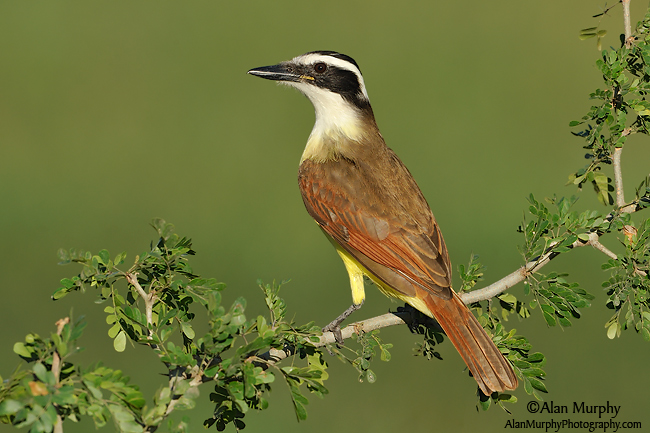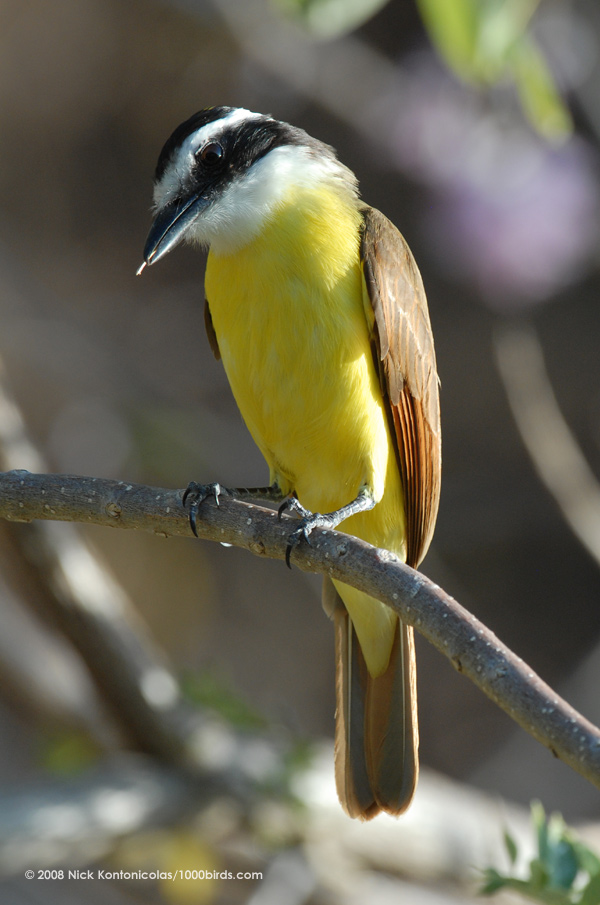
Pitangus sulphuratus
SUBFAMILY
Tyranninae
TAXONOMY
Lanius sulphuratus Linnaeus, 1766, Cayenne. Monotypic.
OTHER COMMON NAMES
English: Kiskadee flycatcher; French: Tyran quiquivi; German:
Bentevi; Spanish: Benteveo Comъn.
PHYSICAL CHARACTERISTICS
9.8 in (25 cm). Plumage includes white forehead and eyebrows,
black crown, wide black eye line, brown back and rump, reddish
brown wings and tail, bright yellow crissum, yellow underparts,
and white cheeks, chin, and throat. Bill is black and stout; legs
and feet are also black. Underwings are yellow, and in flight, the
yellow of the underwings and belly contrast with the reddish
brown of the overwings and tail. A yellow crown patch is usually
concealed. Sexes are similar.
DISTRIBUTION
Common in the tropics of Central and South America. Common
in southwest Texas; casual in coastal Louisiana, southeast
Arizona, southeast New Mexico, southeast Texas, western Oklahoma.
Introduced and established on Bermuda.
HABITAT
Wet woodlands, open areas with scattered trees, forest edges,
scrub vegetation, bushes, and lakes and rivers.
BEHAVIOR
The great kiskadee gets its name from its call, a loud, slow,
screaming “kiss-ka-dee!” or “k-reah!” It is energetic, noisy, and
aggressively territorial, chasing away much larger birds from its
nesting area. Lives solitary or in pairs. It is easily spotted, drying
its feathers on an open, conspicuous perch after diving for
aquatic prey. Nonmigratory.
FEEDING ECOLOGY AND DIET
Sits on perch to watch for prey that includes aquatic insects,
small fish, frogs, tadpoles, baby birds, lizards, mice, and both
crawling and flying insects. Returns to perch to eat. It often
beats larger prey against a branch before swallowing. Takes
fruits and berries when other food is unavailable.
REPRODUCTIVE BIOLOGY
Breeds monogamously, two to three clutches of two to five
eggs per year. Nests are spherical, built by both sexes in thorny
trees, palm trees, or on braces of utility poles. Female incubates
eggs an estimated 13 to 15 days, and young fledge at 12
to 21 days. Young are fed by both parents.
CONSERVATION STATUS
Some in the United States have declined due to habitat loss
caused by deforestation and development. The species is still
common in the Central and South American tropics.
SIGNIFICANCE TO HUMANS
None known.
Photo Gallery of - Great kiskadee




 Animalia Life
Animalia Life